There are certain motifs in Japanese art that have always spoken directly to me — the mountain, the cherry blossom, the crane, and above all, the wave. The wave is eternal, unpredictable, full of rhythm and poetry. It represents both power and fragility, permanence and impermanence. And in my own journey as an admirer of Japanese art, the wave has always been a recurring presence, from childhood to today.
This month I’m excited to release a new six-print collection: the Nami no Uta Black & White Series. Each piece is a meditation on the wave — rendered in monochrome, stripped to its purest lines and contrasts, and inspired both by the long tradition of ukiyo-e and the minimalist restraint of contemporary design.
Why Waves?
When I think back to what first drew me to Japanese art, it was Hokusai. Like so many around the world, I encountered The Great Wave off Kanagawa as a child — long before I knew the word ukiyo-e or understood the history of Edo-period printmaking. The image was simply unforgettable: a frozen instant of drama, foam like claws, a mountain in the distance standing firm against the surge of water.
That single print planted something in me. Waves became more than natural phenomena; they became symbols of impermanence (無常, mujō), of life’s inevitability, of beauty in motion. In Zen thought, the wave is never separate from the ocean — it rises, it falls, but it is always water. That idea has stayed with me for decades.
The Power of Monochrome
For this series, I chose to work in black and white. There is something profoundly meditative about stripping away color and working only with line, form, and contrast.
Black ink on white paper has been the foundation of Japanese art for centuries, from calligraphy to sumi-e brush painting. The economy of means forces the artist to distill an image down to its essence. A single stroke can suggest movement, depth, even emotion.
In these six Nami no Uta prints, the monochrome approach brings out the raw energy of the waves while retaining a minimalist clarity that pairs beautifully with Japandi and Zen-inspired interiors. It’s art that feels at once ancient and modern.
Six Different Songs of the Sea
Each print in this collection is a “verse” in the larger song of the waves.
All six of the set are available as digital downloads on my Etsy store.
Nami no Uta I
The first version of the series sets the tone with sweeping curves and rhythmic lines that rise and fall like music.
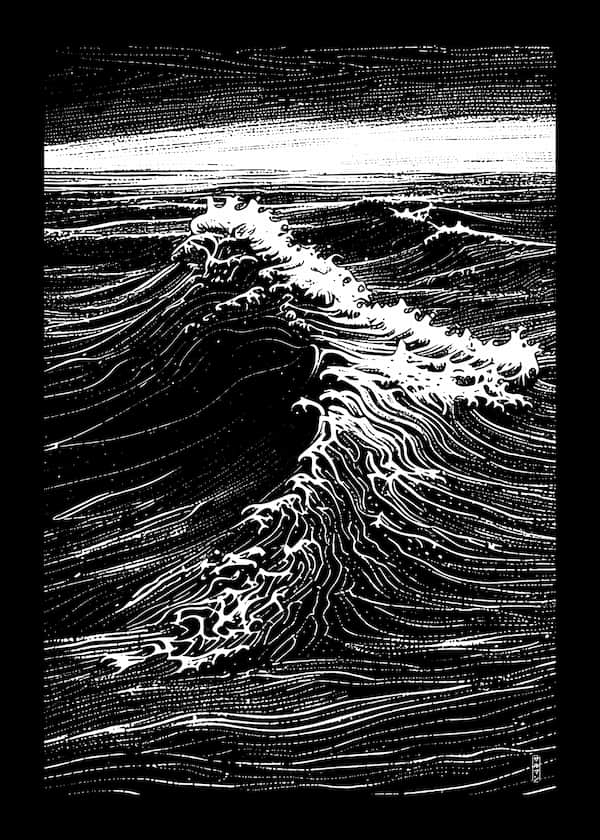
Nami no Uta II
The second version captures the raw power of a crashing wave, bold and dramatic in its form.
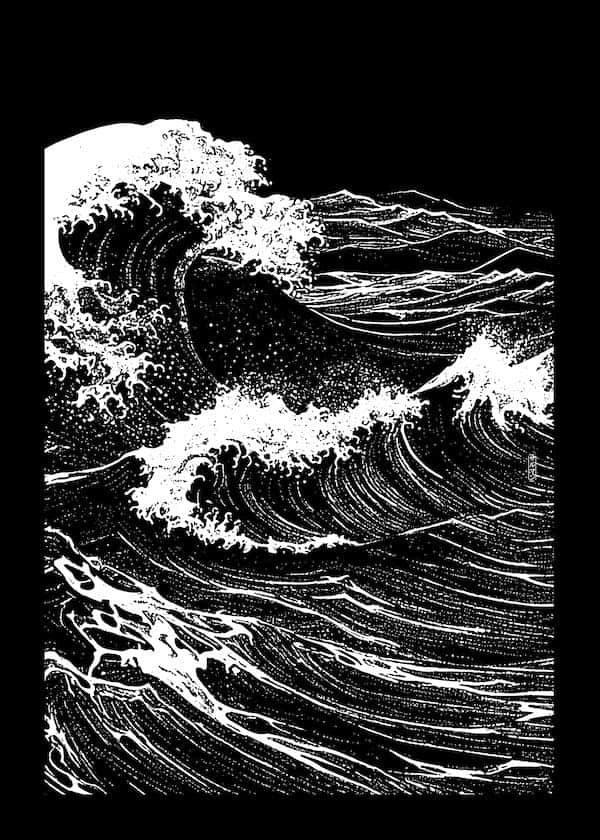
Nami no Uta III
This third version introduces a celestial presence — the moon — casting light across a restless sea.
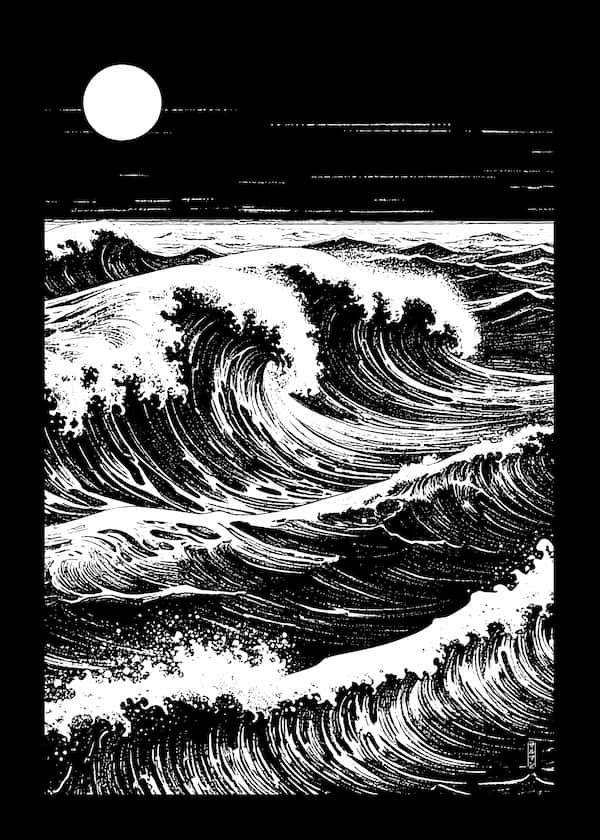
Nami no Uta IV
The fourth version of the series dives into layered currents, with foaming crests that feel alive with movement.
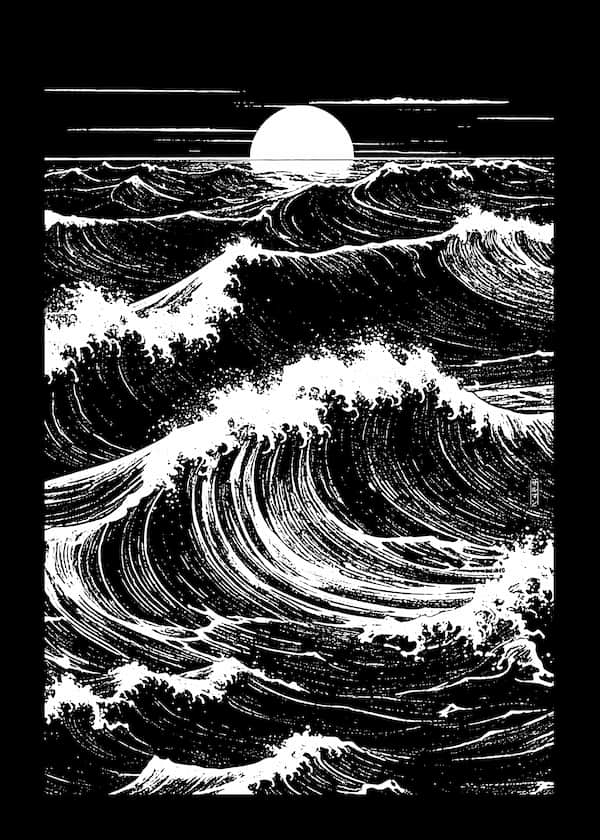
Nami no Uta V
The fifth version explores the restless poetry of overlapping waves, textured and full of energy.
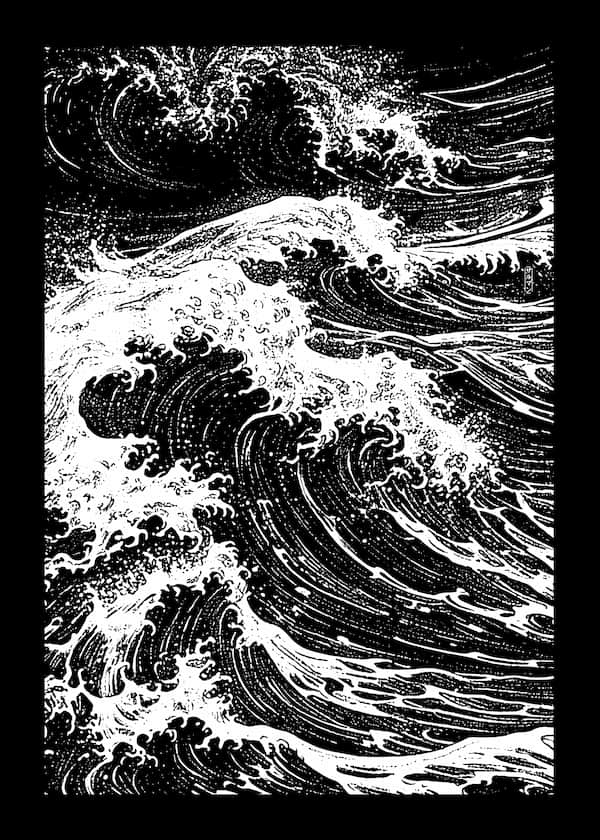
Nami no Uta VI
This version closes the series with a setting sun (or perhaps a rising moon), glowing over a horizon of endless motion, a meditation on beginnings and endings.
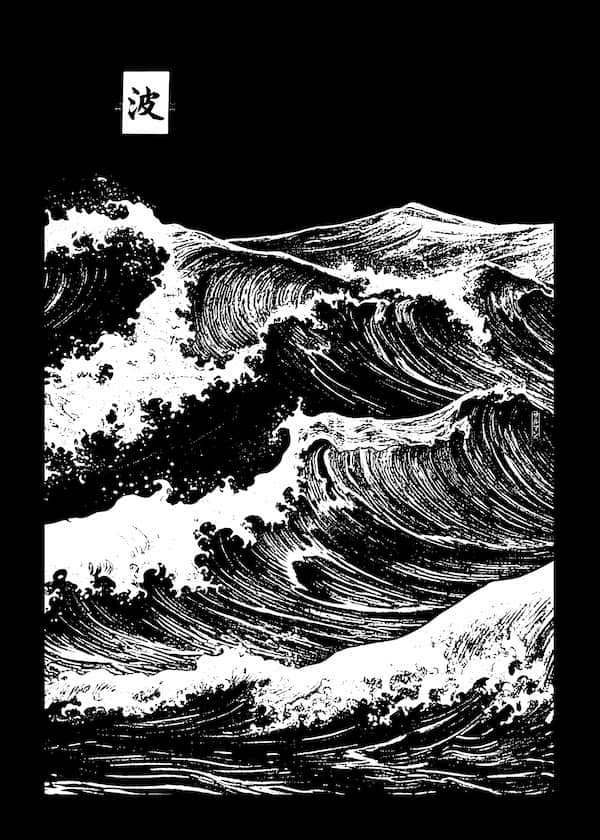
Together, they can be displayed as a gallery wall, a triptych and diptych, or as single statement pieces. My hope is that they carry both quietude and intensity, much like the sea itself.
The Cultural Depth of Waves
In Japanese culture, the wave is not just a motif of nature. It is a symbol that touches on Shinto, Zen, and everyday life.
- In Shinto belief, the sea is alive with kami — divine presences that embody its force and unpredictability.
- In Zen philosophy, the wave is a metaphor for human existence. A wave rises, crests, and falls, but it is never separate from the ocean itself. Life and death are simply forms of the same water.
- In ukiyo-e, waves became some of the most beloved and iconic subjects, celebrated for their movement, rhythm, and connection to the floating world.
This lineage is why I chose to call the series Nami no Uta (波の歌) — “Song of the Wave.” Each print is part of that larger song, echoing centuries of Japanese aesthetics while speaking to our modern lives.
A Personal Influence: Brendan Monroe
One major influence on this series is Brendan Monroe, known as Brendan the Blob (@brendantheblob). His art is built of organic, fluid shapes — landscapes that seem to breathe, shift, and flow. While not always explicitly maritime, his visual language evokes currents, erosion, and inner motion.
Monroe’s signature style was even commissioned for a high-profile project: in 2023, he teamed up with AlphaTauri / F1 to design a special livery for their car during the Las Vegas Grand Prix, drawing from his Black & White aesthetic and “speed streak” motifs.That bold collaboration still feels like a bridge between mural abstraction and kinetic energy in motion.
While Nami no Uta is rooted in Japanese wave tradition and my memories of Hokusai, Monroe’s work pushed me to let abstraction breathe — to allow the wave not just to be drawn, but to be felt in its movement. His project with AlphaTauri showed how abstraction can translate into form and function; it encouraged me to let my waves carry not only line, but life.
Why I Made This Series
Art, for me, has always been both a personal meditation and a way of connecting with others who find meaning in these visual traditions. I wanted to create something that honors the Japanese heritage of wave imagery while also offering a fresh, minimalist approach that feels right for contemporary homes.
I imagine these prints hanging in spaces of calm: a Japandi living room with clean wood textures, a quiet bedroom sanctuary, or even a modern coastal home where the ocean is visible from the window. Wherever they are placed, I hope they carry with them the timeless reminder that we are, all of us, waves — moving, rising, falling, but always part of the same sea.
Closing Thoughts
The Nami no Uta Black & White Collection is my personal ode to the wave — six variations on a theme that has followed me since childhood. From Hokusai’s Great Wave to the works of Brendan Monroe, from Zen poetry to the roar of the ocean itself, these prints are part of my own lifelong conversation with the sea.
In their black-and-white simplicity, I see something that feels eternal, meditative, and quietly bold. I hope you’ll feel the same.
Read More:
- The Japandi Color Palettes Designers Love, Inspired by Japanese Art
- Tansai Gafu: A Forgotten Design Album of Shōwa Japan
- How Kare Sansui Gardens Reflect Japanese Aesthetics and Zen Philosophy
- Furuya Kōrin and Shin Bijutsukai: A New Ocean of Japanese Design
- New Japanese Art Prints: Mt. Fuji and the Grace of the Geisha

At The Art of Zen we carry our own hand-crafted original Japanese art prints in the ukiyo-e and Japandi style. Some of our best selling work is Mount Fuji wall art and Japandi wall art.
Add some zen to your space with brilliant original art from the Art of Zen shop.
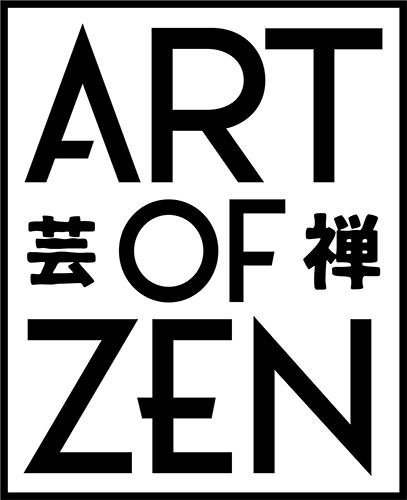
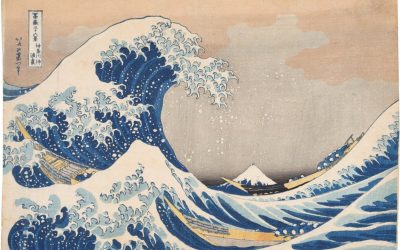
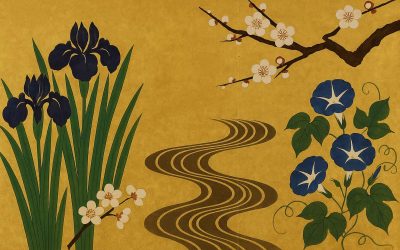

0 Comments